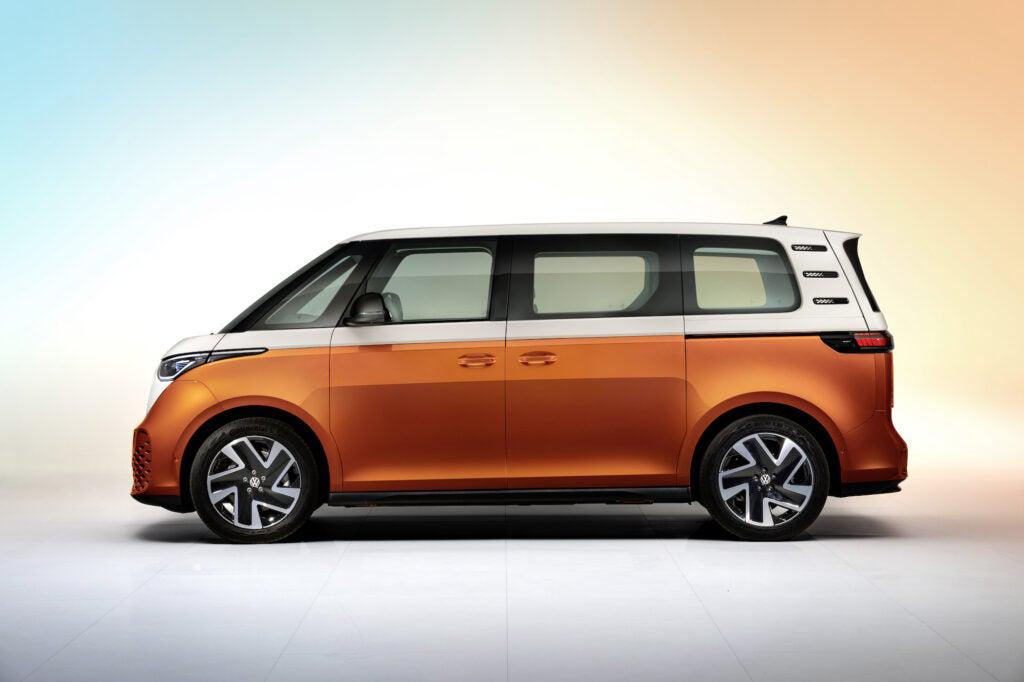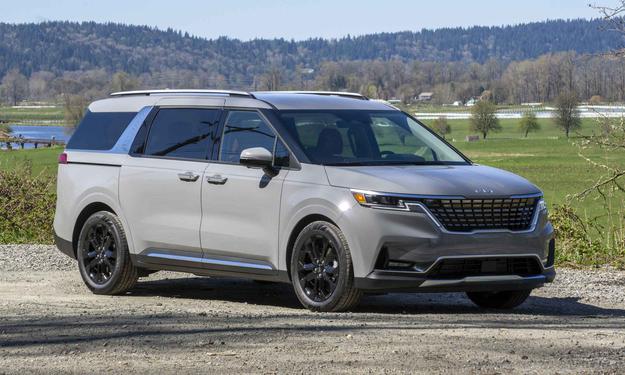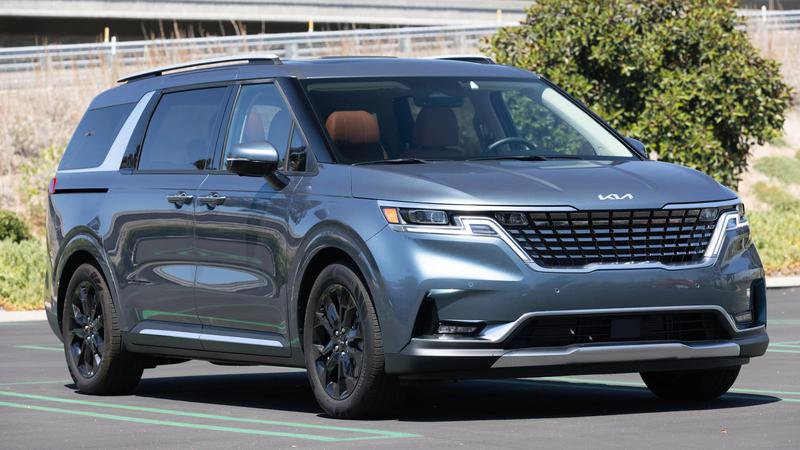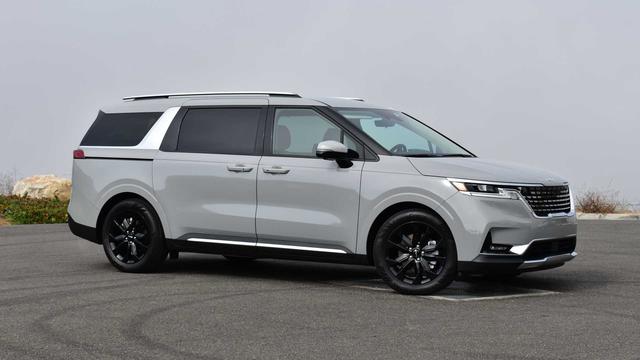After a long road, the iconic van is getting modernized—and becoming an EV. Here's what to know about the ID Buzz.
By Bradley Iger|Published Mar 17, 2022 3:00 PM
It's powered by batteries.VWSHARE
The promise of the ID Buzz has been a long time coming, but the wait for Volkswagen’s EV homage to the original Bus will be over soon.
Volkswagen first floated the idea of a modern take on the iconic people carrier more than two decades ago, when it unveiled the Microbus Concept at the 2001 Detroit NAIAS Auto Show. Ten years later the automaker teased us again with the Bulli Concept, followed by the BUDD-e Concept in 2016, and then the I.D. Buzz Concept a year after that.
Now, many years after the seed was originally planted, VW’s retro-futuristic van is finally a reality. While the look harkens back to the flower power days of the 1960s—replete with two-tone paint and an oversized VW logo on the nose—the hardware underneath is decidedly next-gen.
The ID Buzz is underpinned by Volkswagen’s Modular Electric Drive (MEB) vehicle platform, architecture that is shared not only with the VW’s ID.4 crossover EV, but also its sibling company Audi’s Q4 and Q5 E-Tron EVs. Propulsion comes from a rear-axle electric motor that generates 201 horsepower and 229 pound-feet of torque, all drawing from a floor-mounted 82-kWh battery, a setup that falls right in line with the base configuration of the ID.4.

The system supports DC fast-charging at up to 170 kW, which means that when it’s hooked up to a Level 3 charger, the ID Buzz can go from a five percent state of charge to eighty percent in roughly 30 minutes. As with EVs like the Ford F-150 Lightning, the ID Buzz will also offer bi-directional charging, allowing the van to serve as a backup power source for homes during events such as power outages.
[Related: Ford added more power to its electric Mustang Mach-E. Here’s how it drives.]
Volkswagen hasn’t offered up any information on the van’s performance or range as of yet, but we do know that it’s electronically limited to 90 mph. That bodes well for its capability in comparison to its air-cooled ancestor, at least, which notoriously struggled to reach freeway speeds. Additional powertrain and battery combinations are expected to roll out in the coming years as well. In another VW vehicle, the ID.4, all-wheel drive versions add an AC induction motor to the front axle and raise its total output to 295 hp and 339 lb-ft; we wouldn’t be surprised to see a similar setup offered for the ID Buzz in the not-too-distant future.
The interior of the ID Buzz is a bit more conventional than its eye-catching sheet metal might suggest, featuring Volkswagen’s 10-inch Digital Cockpit instrument cluster and a 10-inch touchscreen infotainment display as standard, while a 12-inch version of the system is also optionally available. Expect a vast array of cubbies, pockets, and other storage solutions, along with plenty of USB-C ports for charging devices.
Given the fact that it’s the spiritual successor to an icon of the hippy movement, it should come as no surprise that there are a number of forward-thinking manufacturing practices involved in the ID Buzz’s design as well. Aside from its organically-based exterior paint, the van also sports vegan materials and recycled plastics in the cabin, while its cobalt-free battery pack is also guaranteed for up to eight years or 100,000 miles in Europe. The cells from these packs will also be recycled at the end of their service life, the automaker notes.
When it launches in Europe later this year, the ID Buzz will be available in the short wheelbase form seen in the images on this page as either a two-row passenger van with a pair of seats up front and a three-seat rear bench; or it will be available as a commercial cargo van with a three-seat bench up front and nearly 138 cubic feet of storage space situated behind a fixed partition. The two-row ID Buzz offers 60/40-split sliding rear seats that yield as much as about 40 cubic feet of cargo, and VW says that there will also be a tiered storage shelf available that will provide a flat load floor with the rear seats folded.
Neither of those versions will be headed to North America—but fear not, we’ll instead see a three-row, long wheelbase iteration of the ID Buzz with seven-passenger seating capacity. That version of the van is expected to debut next year and land in American showrooms in 2024.
Seven single-color and four two-tone paint options will be available at launch, and matching two-tone interior color schemes will be optionally available as well. VW hasn’t announced pricing yet, but estimates predict a starting price of around $45,000 for the long wheelbase version we’ll get in the US, and fully loaded versions are expected to crest $60,000. We should have more concrete figures in the coming months, as VW says that they’ll reveal more details before the ID Buzz officially goes on sale in Europe this summer. American buyers will have to wait a bit longer, though, as Volkswagen won’t begin taking reservations from buyers on this side of the pond until 2023.
auto Cars electric cars electric vehicles Technology




